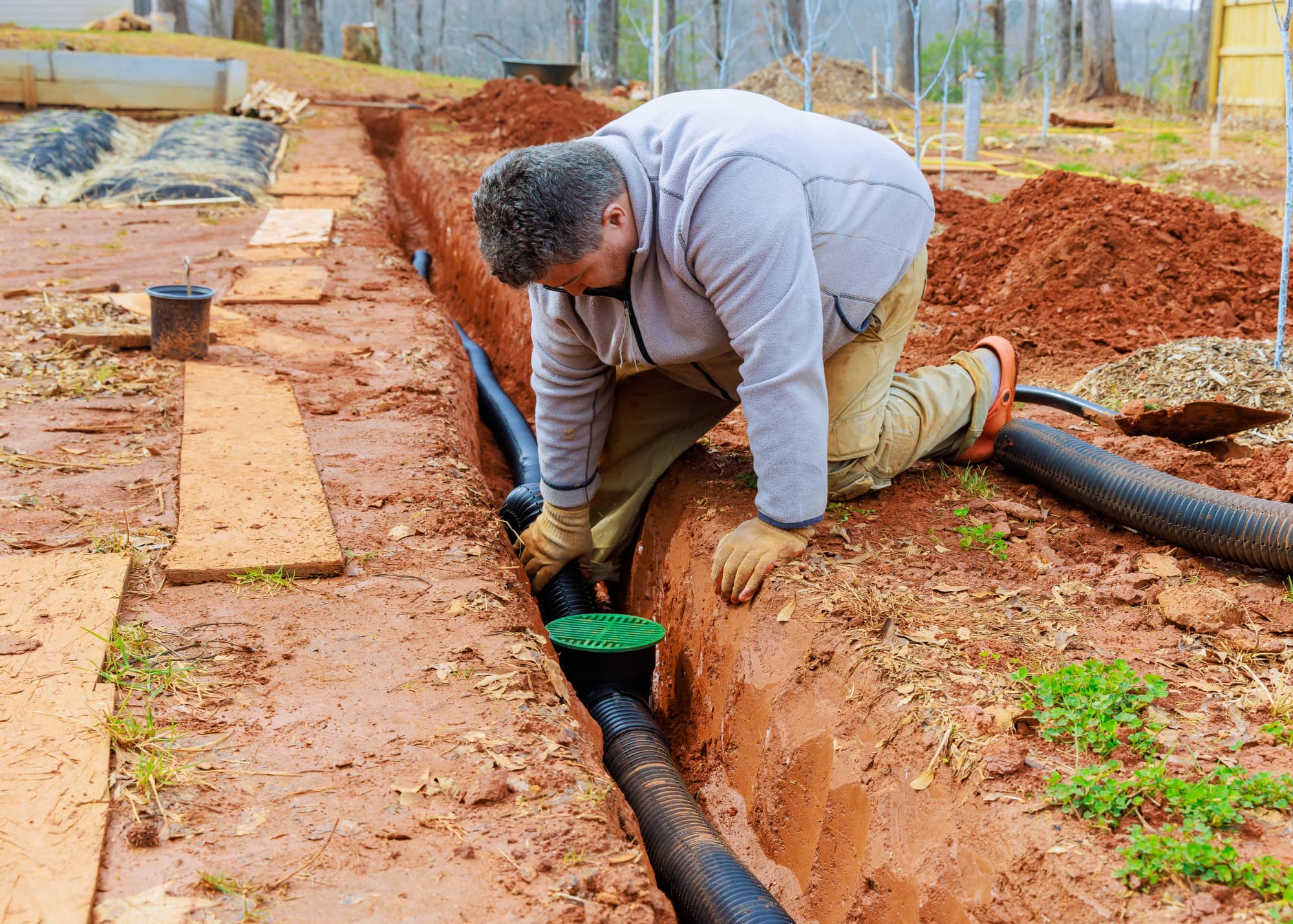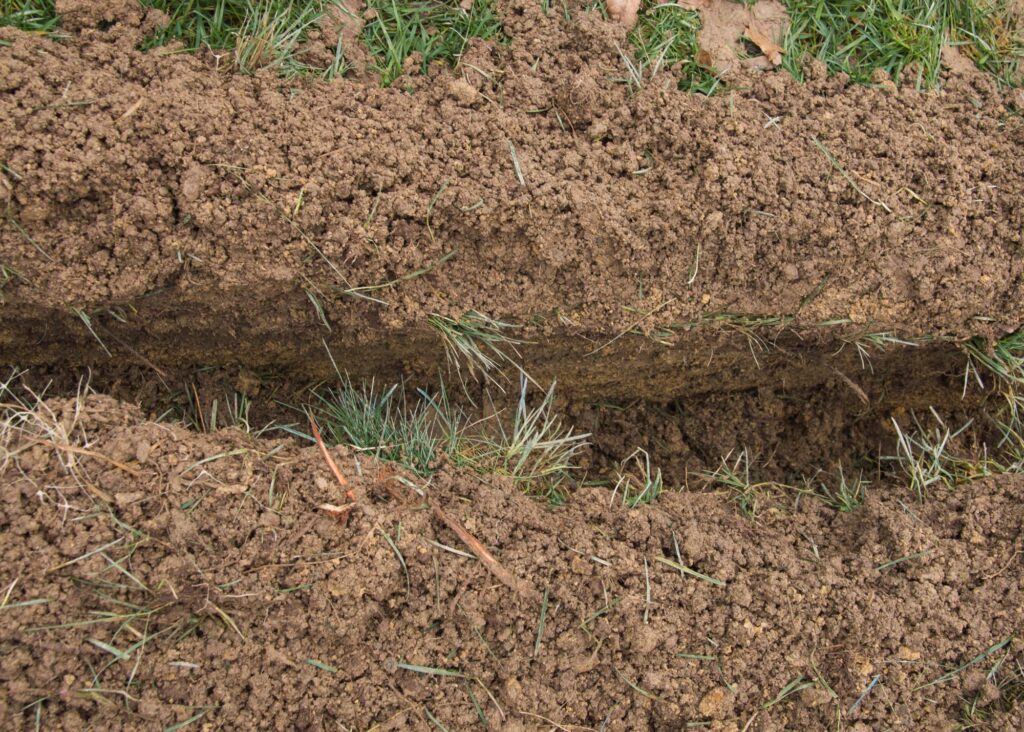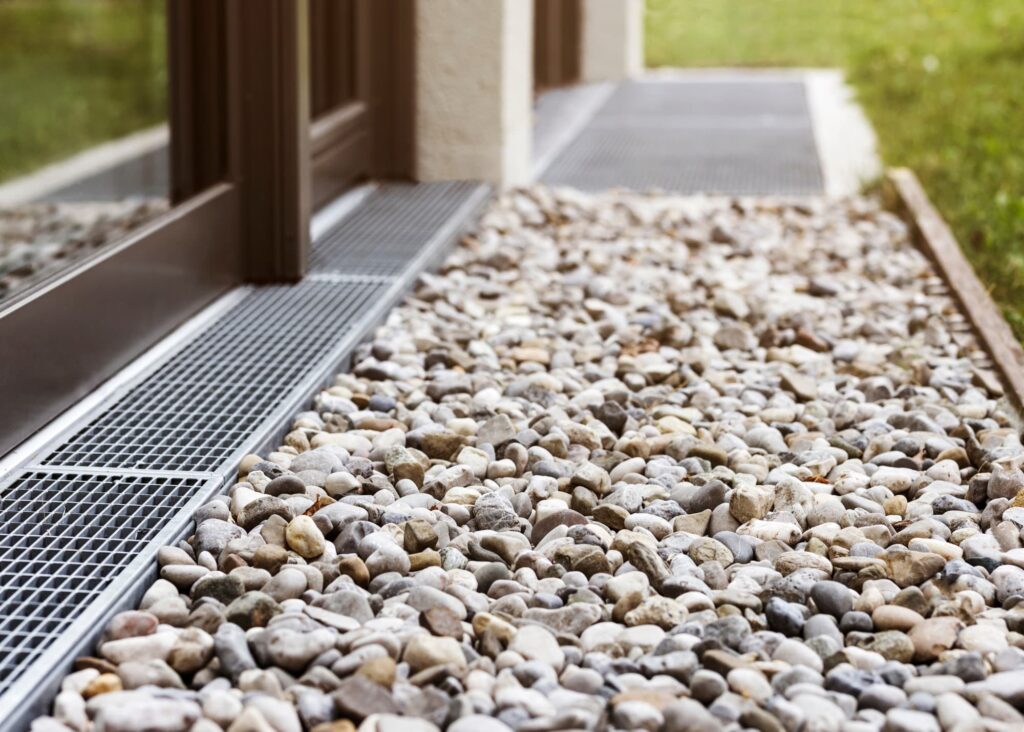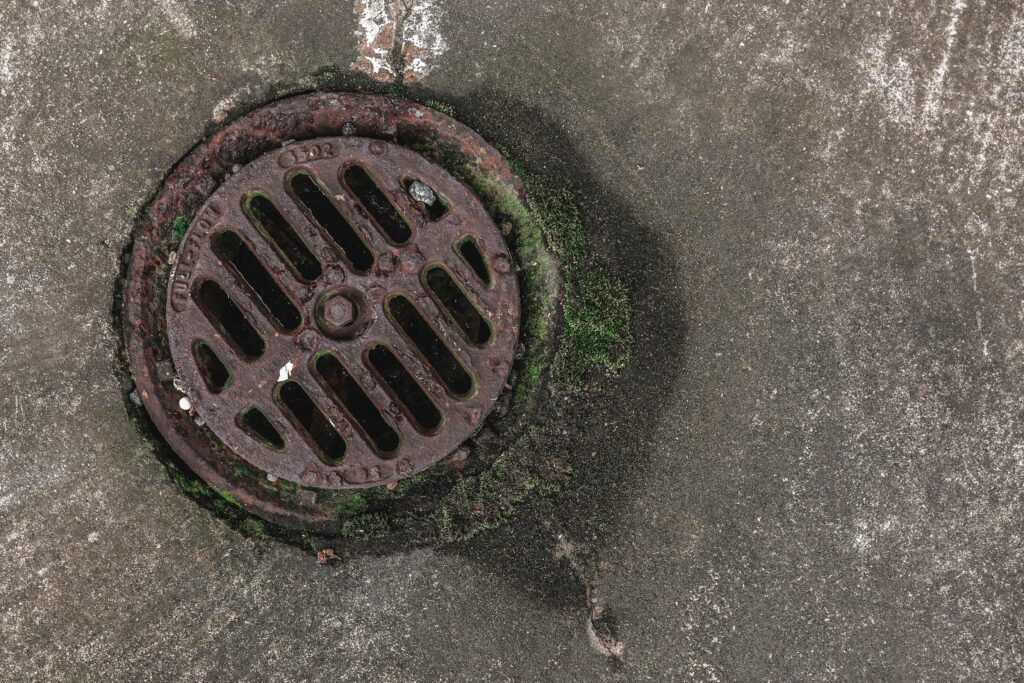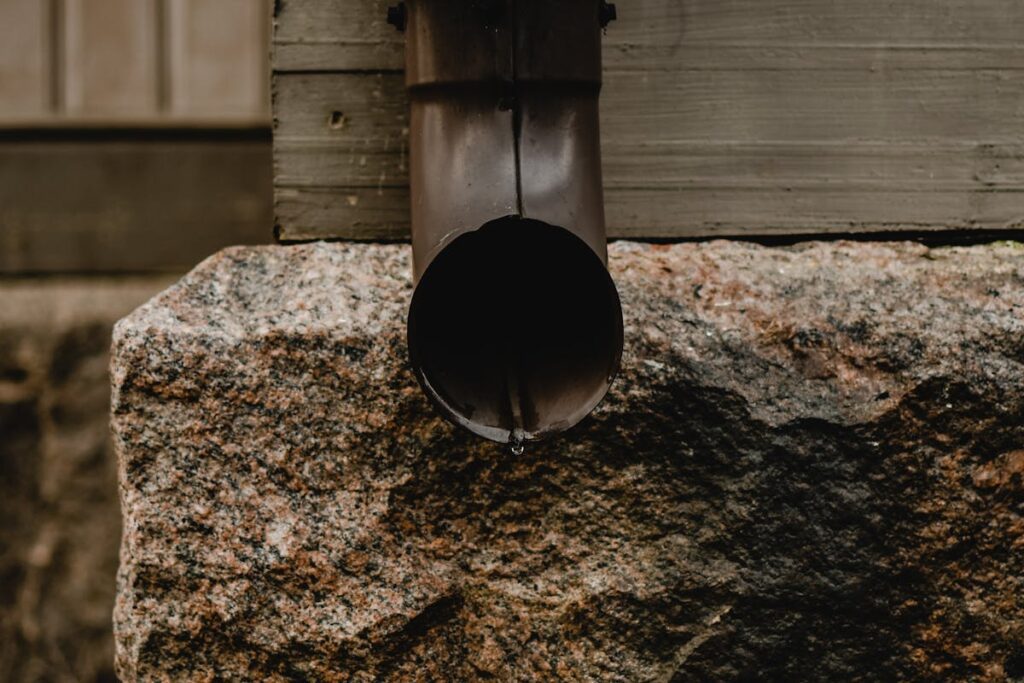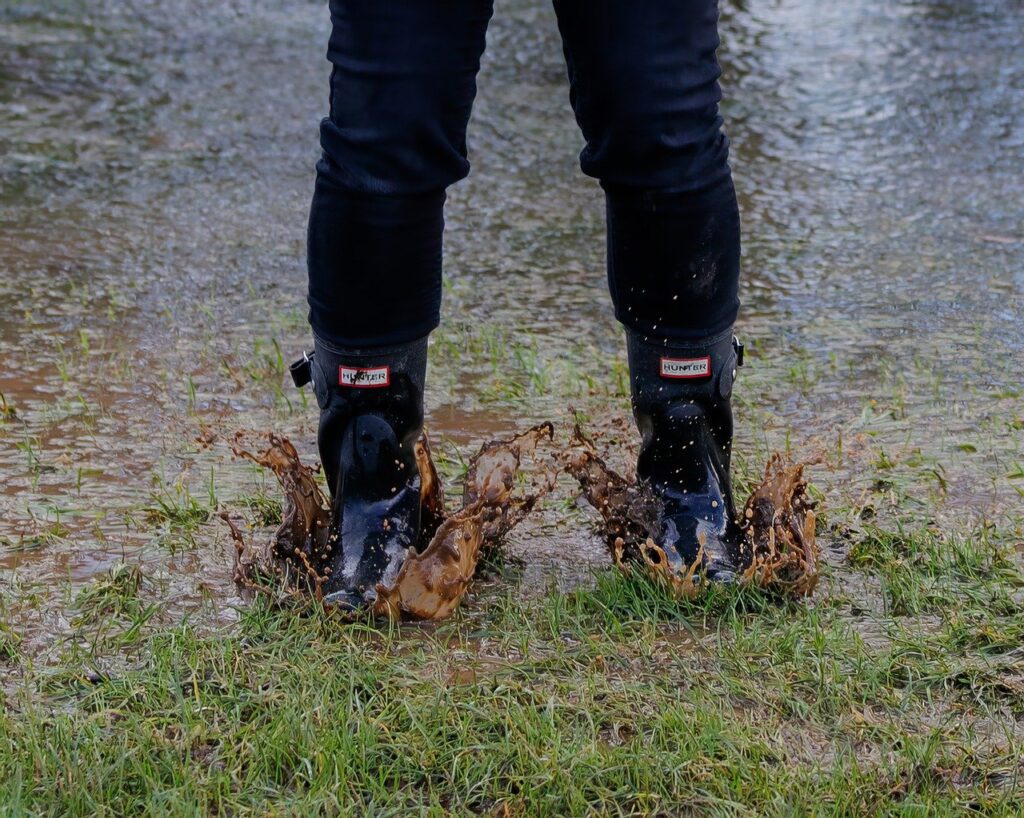Drainage problems can wreck your yard!
Looking for the right drainage solution requires home and business owners to consider what is causing the problem, what options exist to fix the problem, and how much money you can put toward the solution.
When considering your options, you may hear about two of the most common drainage solutions: french drains and trench drains. Understanding the differences between a French drain and a trench drain will help you determine which type of drainage system will fit your needs best.
Both French and trench drains involve trenches, but the simplest explanation is that French drains move subsurface water through a trench that is hidden underneath soil and grass, whereas trench drains are on the surface to quickly remove water from large areas. They are covered in large grates or solid covers.
What is a French Drain?
A French drain is a gravel-filled trench that redirects surface water away from areas prone to flooding. It is a great solution for low-lying areas in yards, driveways, foundations, and basements.
In the trench of a French drain, you’ll find a perforated pipe that is surrounded by gravel. Atop the gravel is a layer of landscaping fabric or soil. Sod is laid on top of the drainage system. Alternatively, you can plant grass seed instead of laying sod.
The job of the perforated pipe is to carry the water away from the flood-prone area and direct it to a suitable discharge point. This is usually a storm drain or dry well.
When is a French drain needed?
A French drain is preferable in several situations.
Groundwater Control
French drains are especially good at redirecting groundwater and surface water from the foundations of buildings where standing water can cause serious damage. Instead of water seeping into the building, it soaks through the soil and gravel to be carried away through the perforated pipe.
Preventing Soil Erosion
French drains prevent soil erosion issues, which are especially common in areas with sloping terrain and hillsides. For these hills, French drains can be installed to intercept and redirect water runoff.
Protecting Landscaping Beds
Excess water in your landscaped beds can absolutely destroy your landscaping! Flower beds, gardens, and lawns can get waterlogged, damaging your flowers, trees, and other plants. Standing water can also ruin your mulch, create brown spots in your yard, and kill your grass. A French drain can remedy these problems.
What is a Trench Drain?
Trench drains are also known as channel drains and line drains. A trench drain is a linear drainage system that, like a French drain, is used to collect surface water runoff and move it to a more suitable location.
However, trench drains are used to collect water from large open areas, such as driveways, patios, pool decks, and loading docks.
These channel drains consist of a narrow, rectangular trench that is covered with a grate or a solid cover. Trench drains are usually made of concrete, plastic, or metal. They are sloped at the bottom. In contrast to French drains, trench drains are installed at ground level. Water flows directly into the trench and is then redirected through the pipe or drainage system.
When is a trench drain needed?
When it comes to a channel drain vs. a french drain, the main reason for installing a channel drain is the need to move lots of water from a large, open area as fast as possible.
Large Open Areas
Trench drains are ideal for collecting surface water runoff from large open areas. This includes driveways, parking lots, loading docks, pool decks, patios, and more. The linear design of a trench drain allows for fast, efficient drainage of water.
High-Volume Water Flow
The size of a trench drain allows it to handle high volumes of water. This is especially important in large, commercial settings like huge parking lots. Business owners can’t have drivers stranded in deep water after a heavy rain, so it is important to move lots of water off of the parking surface as fast as possible.
Pedestrian and Vehicle Traffic Areas
Trench drains can be covered with grates or solid covers, as opposed to soil and grass. This makes trench drains far more durable when they are installed in areas with heavy pedestrian and vehicle traffic.
Lower Maintenance
French drains require quite a bit of maintenance, whereas the larger trench drains are less susceptible to clogging from sediment and debris. The solid or grated covers can be removed for easy cleaning. You also don’t have to maintain grass or other landscaping atop the trench drain.
Drainage Installation FAQ
What is the difference between a trench drain and a French drain?
Simply put, a French drain removes subsurface water that causes flooding above the surface, but a trench drain quickly diverts standing water from a large surface area.
Is a drainage system the same thing as a storm drain?
A storm drain is a type of drainage system, but not all drainage systems use storm drains. Storm drains collect and divert rainfall, and they are typically found in neighborhoods and cities. French drains and trench drains are sometimes installed to deposit water into a storm drain.
How do I know if I need a new drainage system?
Signs of drainage problems include:
- Standing water in your yard that takes a long time to dissipate after the rain
- Soil erosion
- Water seeping into your foundation
- Water damage in your basement
- Dead patches in your yard from water damage
- Landscaping problems caused by too much water
Can I install a drainage system on my own?
Drainage systems are a major, labor-intensive project! Although some DIY-ers love a big challenge like installing a drainage system, most property owners benefit from bringing in a professional team like Ware Landscaping. Professionals understand the complexities of drainage and can install the system faster and more effectively than someone who is tyring to do it on their own.
Because trench drains are usually found on commercial properties, it is rare for these property owners to DIY their trench drain projects. Smaller French drains on private property may be doable, but always consult an expert to find out any problems you might face.
How do I maintain my french drain?
All drainage systems require some maintenance. French drains should be inspected regularly to make sure there is no debris clogging the grates, catch basins, or even the perforated pipes.
Choose Ware Landscaping for Your Drainage Needs
At Ware Landscaping, we are proud to be Naperville’s premier drainage experts. We can help you develop a drainage plan that resolves the frustrating water issues at your property. Whether you need to move water away from your house, landscaping, or commercial area, we can help.

